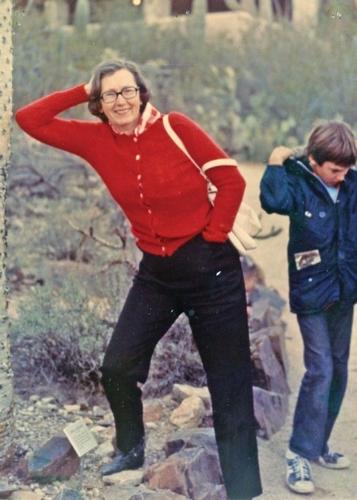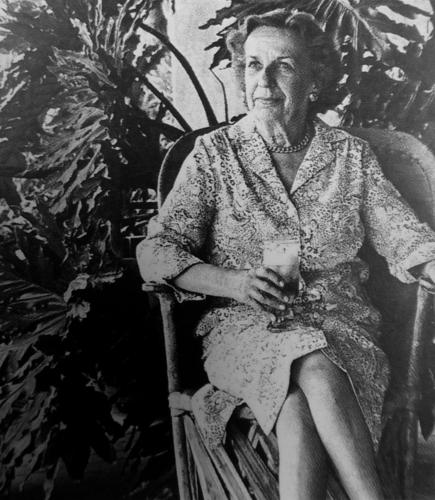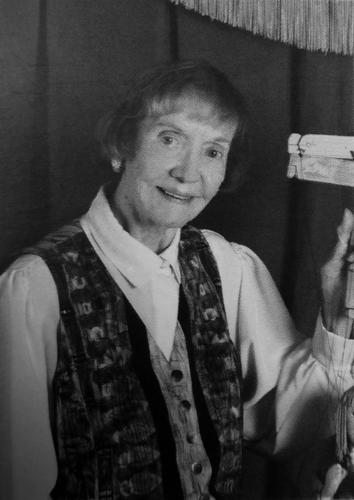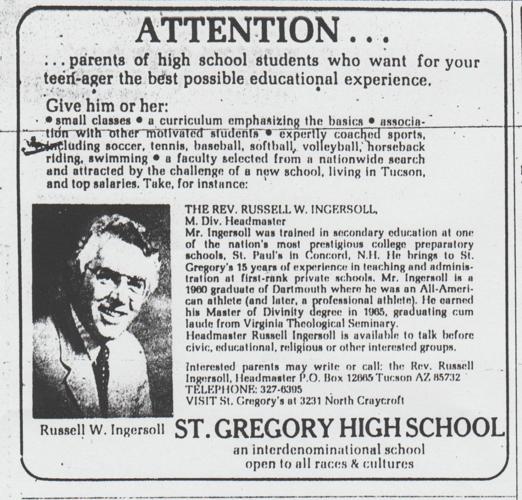The Gregory School began as the idea of newspaperwoman Ruth McCormick “Bazy” Tankersley.
Tankersley was born in Chicago in 1921 to Joseph Medill McCormick, a U.S. senator, and Ruth Hanna McCormick, a congresswoman. Both of her parents were involved in the newspaper industry, and she went on to become publisher of the Washington Times-Herald before it was bought out by the Washington Post.
Tankersley, who bred Arabian horses in Tucson, shared her mother’s passion for education and decided in 1978 that Tucson needed another private high school. She bought a book on how to start a school and wrote to the National Association of Independent Schools seeking materials and information. She envisioned an Episcopal college-preparatory school here and enlisted the support of the Rev. Roger Douglas, then rector of the St. Philip’s in the Hills Episcopal Church, and a few interested friends. In time, an independent board of trustees was formed to incorporate the school as a 501 c(3) entity, able to receive tax-deductible gifts.

Jane Ivancovich. Courtesy of The Gregory School
Jane Ivancovich joined Tankersley as the school’s main benefactors during the startup phase. Ivancovich — whose husband was Byron Ivancovich, an attorney from a pioneer Tucson family — was a devout Roman Catholic. When Tankersley offered her the opportunity to name the school, she conferred with her spiritual advisor, who suggested Saint Gregory I (Gregory the Great), the patron saint of teachers and students. Soon after, the board approved naming the school St. Gregory.
In June 1979, Tankersley was interviewed about her reasons for starting a new school.
“I’m not disappointed with public schools here, I’m just a big believer in parochial-school education,” she said. “It’s wonderful to have lots of alternatives for education available — competition in education is just as good as competition in any other field.”
The first board of trustees included Tankersley, the Rev. Douglas, Hermann Bleibtreau, Dianne Bret Harte, Richard Dufflield, Michael Farley, William Freeman, Judge Harry Gin, Margaret Gleason and Raquel Goldsmith. The board conducted a national search for a headmaster and chose the Rev. Russell W. “Russ” Ingersoll, who had been chaplain and religion instructor at private schools in Minnesota and New Hampshire. He had also been rector and headmaster at private boarding schools in Wisconsin and Virginia.
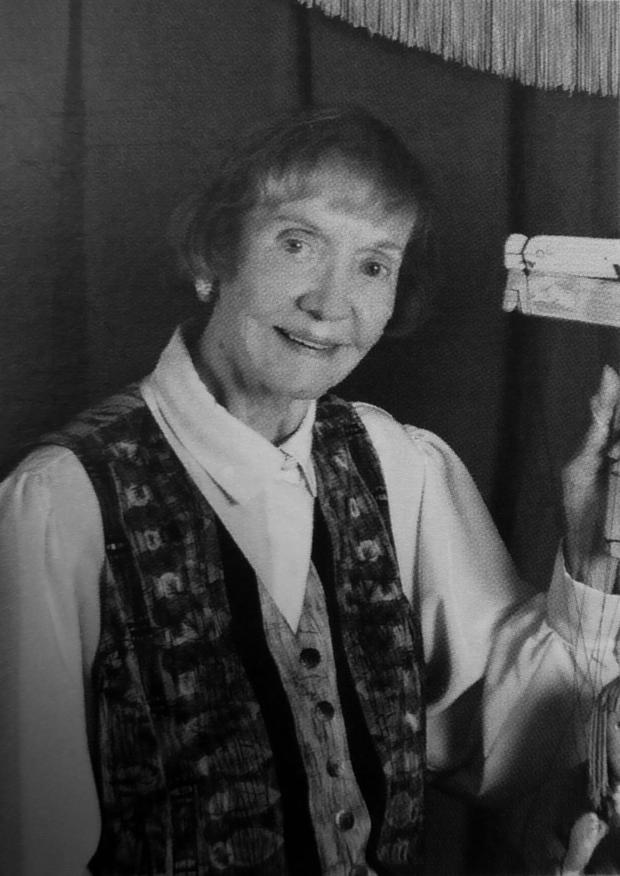 |
Within the first year, Margaret Modine-Gomez joined Tankersley and Ivancovich as the third benefactor for the fledgling school. In December 1979, George Rosenberg, who had been an editor with the Tucson Citizen and was well-connected in town, was hired as development director.
Ingersoll’s initial duties were to develop a rigorous curriculum, hire a first-rate faculty and market St. Gregory to the local community.
Working out of a rented trailer in St. Philip’s unpaved parking lot, he began searching for faculty. He invited the finalists to Tucson for a conference to help identify which ones were the best fit for the new school. By January 1980, he had hired the school’s first teachers: Christopher Boyle of Delaware for English, Vinton Geistfeld of Minnesota for math, Oscar Morales of Tucson for languages and Howard Zeskind of Washington, D.C., for history.
Meanwhile, a site committee searched for suitable land and, in March 1980, chose a parcel on North Craycroft Road near East River Road. It had been part of the Fort Lowell Military Reserve in the late 1800s, then was included in the William Haynes homestead property. It had several successive owners until Dickson B. Potter purchased the land on Dec. 4, 1945.
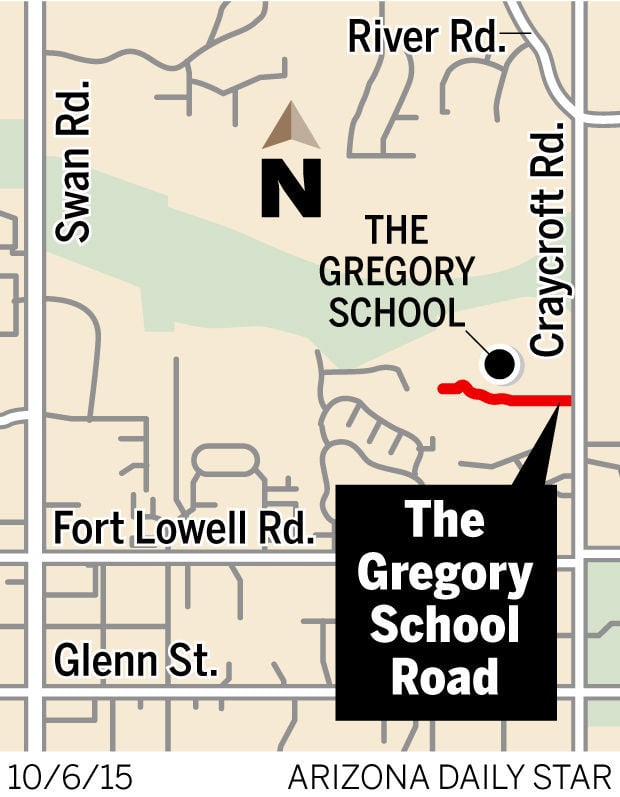 |
Potter was a New York native but had maintained a home in Tucson since the late 1930s. He and his wife, Sue, founded the Potter School for Girls across the street from the Arizona Inn on Elm Street, along Potter Place. His Tucson land became known as the Potter Ranch; a ranch house and stables were constructed for the riding master who lived there and taught English and Western style riding (plus jumping to girls whose parents granted their permission).
In late 1980, the school had its first open house. Ingersoll, who now lives in North Carolina, remembers that day: “The open house was hardly a tour of the school, since none of the renovation work had begun. All we had to show in terms of (the) physical plant was a ranch house waiting to be renovated. What we did tout, however, was our philosophy, our curriculum, our teachers and our strategic plan.
“That we were able to accept to the school in excess of 40 able and motivated students and their families for our inaugural year — though smaller than what was first projected — was an excellent start given the delay caused by our late acquisition of land.”
St. Gregory Episcopal High School opened on Sept. 5, 1980, with about 50 students. Eventually the school ended its affiliation with St. Philip’s and became a non-religious educational institution, known as St. Gregory High School. It recently changed its name to The Gregory School.


